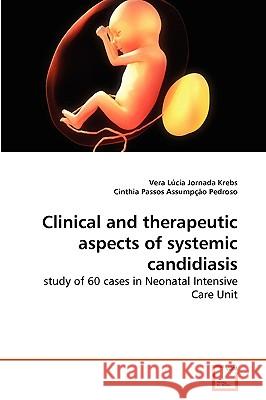Clinical and therapeutic aspects of systemic candidiasis » książka
Clinical and therapeutic aspects of systemic candidiasis
ISBN-13: 9783639261547 / Angielski / Miękka / 2010 / 60 str.
The aim of this study was to describe the clinical, etiological and therapeutic aspects of systemic candidiasis in 60 infants hospitalized in Neonatal Intensive Care Unit (NICU), during a 10-year period. An observational study was carried out during the period from 1994 to 2003. In this decade there were 3219 admissions to the NICU. Sixty newborns (1.8% of cases) developed systemic candidiasis, observing the wide variation of 0.8% in 1995 to 5.2% in 2002. Candida species identified were C.albicans (83.3%), C. tropicalis (6.7%), C.parapsilosis (5%) and C.glabrata (1.7%). Low birth weight occurred in 63.3% of the newborns, with 50% of them weighing
The aim of this study was to describe the clinical, etiological and therapeutic aspects of systemic candidiasis in 60 infants hospitalized in Neonatal Intensive Care Unit (NICU), during a 10-year period. An observational study was carried out during the period from 1994 to 2003. In this decade there were 3219 admissions to the NICU. Sixty newborns (1.8% of cases) developed systemic candidiasis, observing the wide variation of 0.8% in 1995 to 5.2% in 2002. Candida species identified were C.albicans (83.3%), C. tropicalis (6.7%), C.parapsilosis (5%) and C.glabrata (1.7%). Low birth weight occurred in 63.3% of the newborns, with 50% of them weighing <1500 g and, among those, 23.3% weighed <1000g. Signs and symptoms most frequently observed at the time of suspicion of systemic candidiasis were respiratory abnormalities, abnormal temperature (hypothermia and hyperthermia), lethargy, hepatomegaly and splenomegaly. Multisystemic complications were frequent and severe, with high mortality (33.3%), significantly associated with the occurrence of pneumonia or thrombocytopenia.











